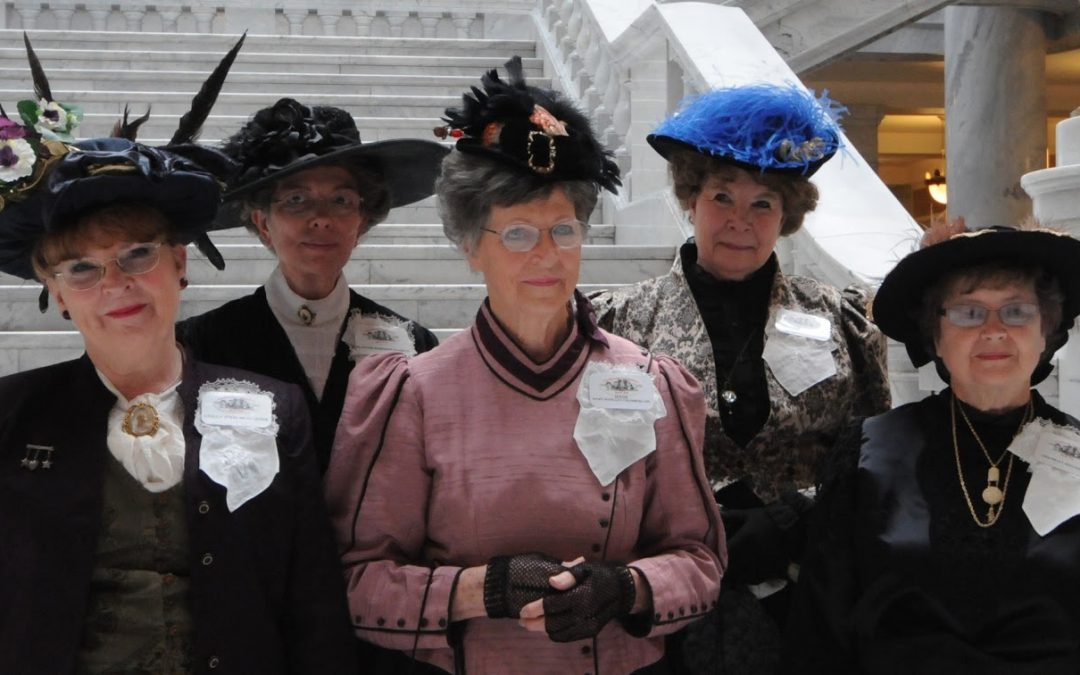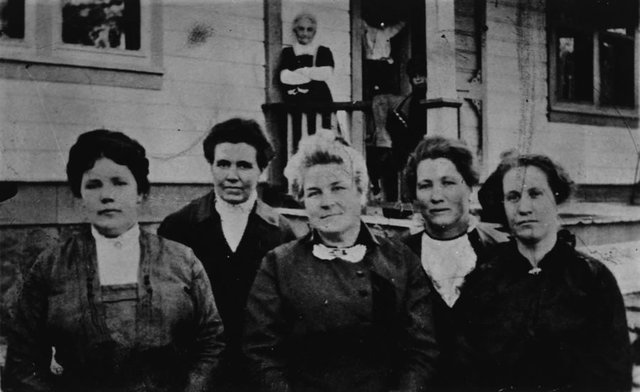This article written by Katie Lambert appeared in the 7 November 2016 online edition of LDS Living.com.
On the eve of Election Day, many are contemplating their vote and the results tomorrow will bring.
But among those who fought for this right to cast their say in elections and hold political offices were valiant Mormon women.
In 1870, well ahead of August 1920 when the 19th Amendment to the Constitution was ratified, Utah—though not yet a state—became the second U.S. territory to pass an act allowing women to vote.
Two days after the act was signed, Sarah Young, grandniece to the Prophet Brigham Young, was the first woman to cast her vote in a municipal election, according to historytogo.utah.gov.
Though the act was repealed by congress in 1887, the right for women to vote was later added to Utah’s Constitution in 1895.
A year later, Utah yet again became the first state to carve out a milestone for women’s rights.
After a campaign trail of passionate speeches about women’s suffrage, Mary Elizabeth Woolley Chamberlain became the first woman in Utah to become a county clerk.
As Chamberlain wrote:
“I was nominated on the Republican ticket for county clerk of Kane County. . . . Women had never held office in Utah and the propriety of her doing so was a moot question which was thoroughly ‘mooted,’ I assure you” (Janelle M. Higbee, Women of Faith in the Latter Days, Vol. 3: 1846-1870, “A Strong and Abiding Testimony”).
But Chamberlain’s political career was not over.
On Nov. 7, 1911, Chamberlain became the first female mayor in U.S. history elected along with an all-female town council.
Unfortunately, this historic event was not taken as seriously as it should have been at the time.
“Our election was intended as a joke and no one thought seriously of it at the time. When election day dawned, there was no ticket in the field; no one seemed interested in the supervision of the town, so the loafers on the ditch bank (of which there were always plenty) proceeded to make up the above ticket as a burlesque, but there was no other ticket in opposition, so, of course, we were elected” (Janelle M. Higbee, Women of Faith in the Latter Days, Vol. 3: 1846-1870, “A Strong and Abiding Testimony”).
Initially disgusted by the “joke,” Chamberlain almost refused the nomination. But others talked her into keeping the position, and Chamberlain held the office of mayor of Kanab, Utah, from 1911 to 1913.
Her efforts as mayor inspired other women, including Susa Young Gates, daughter of Brigham Young. A strong women’s suffrage advocate and writer, Gates was especially enthusiastic about Chamberlain’s political achievements.
“Aunt Susa called me ‘Mayor’ and shouted it out wherever she met me, on the street, in meeting, at the temple, or elsewhere, much to my embarrassment at times, but she took great delight in it” (Janelle M. Higbee, Women of Faith in the Latter Days, Vol. 3: 1846-1870, “A Strong and Abiding Testimony”).
Though many women have worked valiantly to shape women’s rights, these Mormon women helped pave the way for women’s suffrage and women’s rights while leaving their mark on history.
Photo from deseretnews.com of the Kanab all-woman town council. From left to right: Luella McAllister, treasurer; Blanche Hamblin, councilor; Mary W. Chamberlain, mayor; Tamar Hamblin, clerk; Ada Seegmiller, councilor.
About Guest Author
Twitter •



 Watch a video about the restoration of the gospel on lds.org
Watch a video about the restoration of the gospel on lds.org